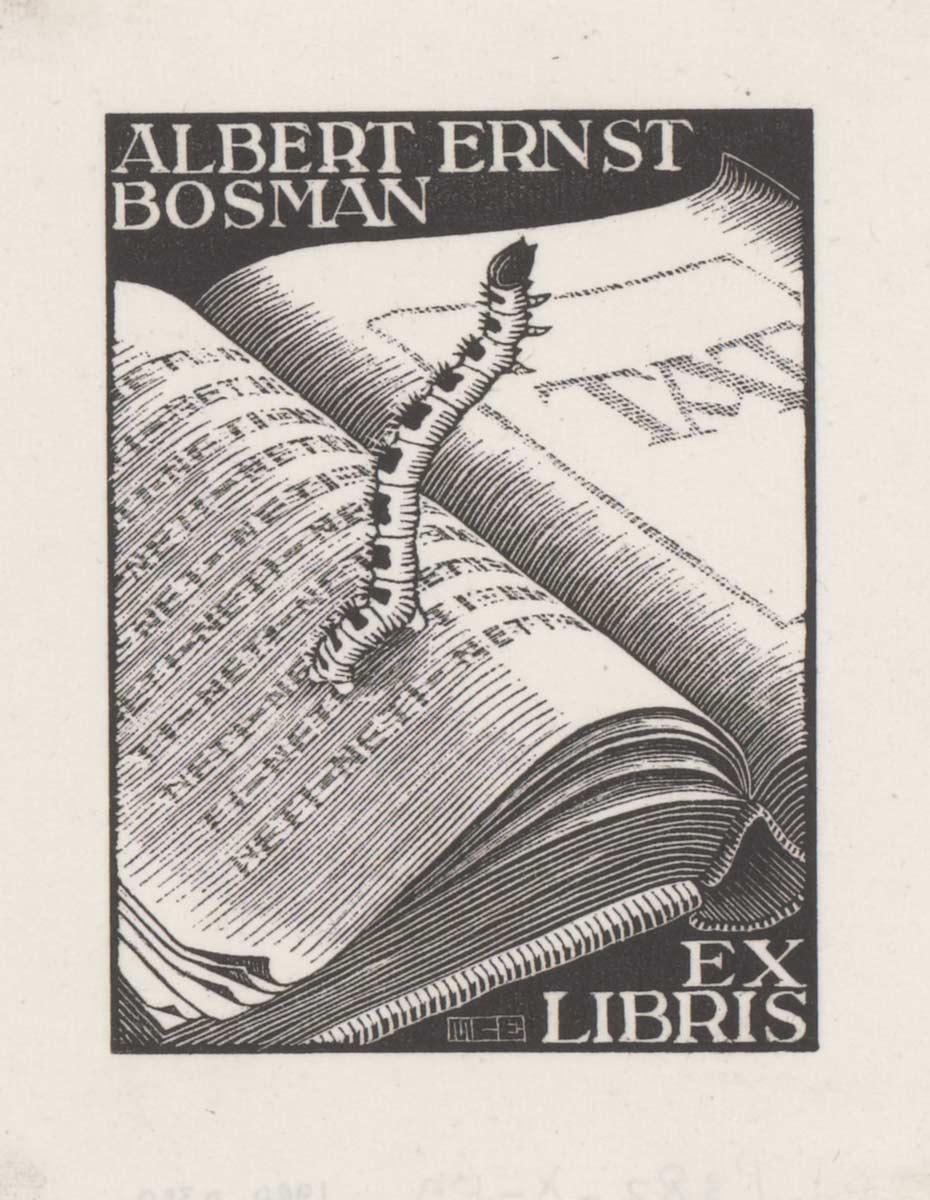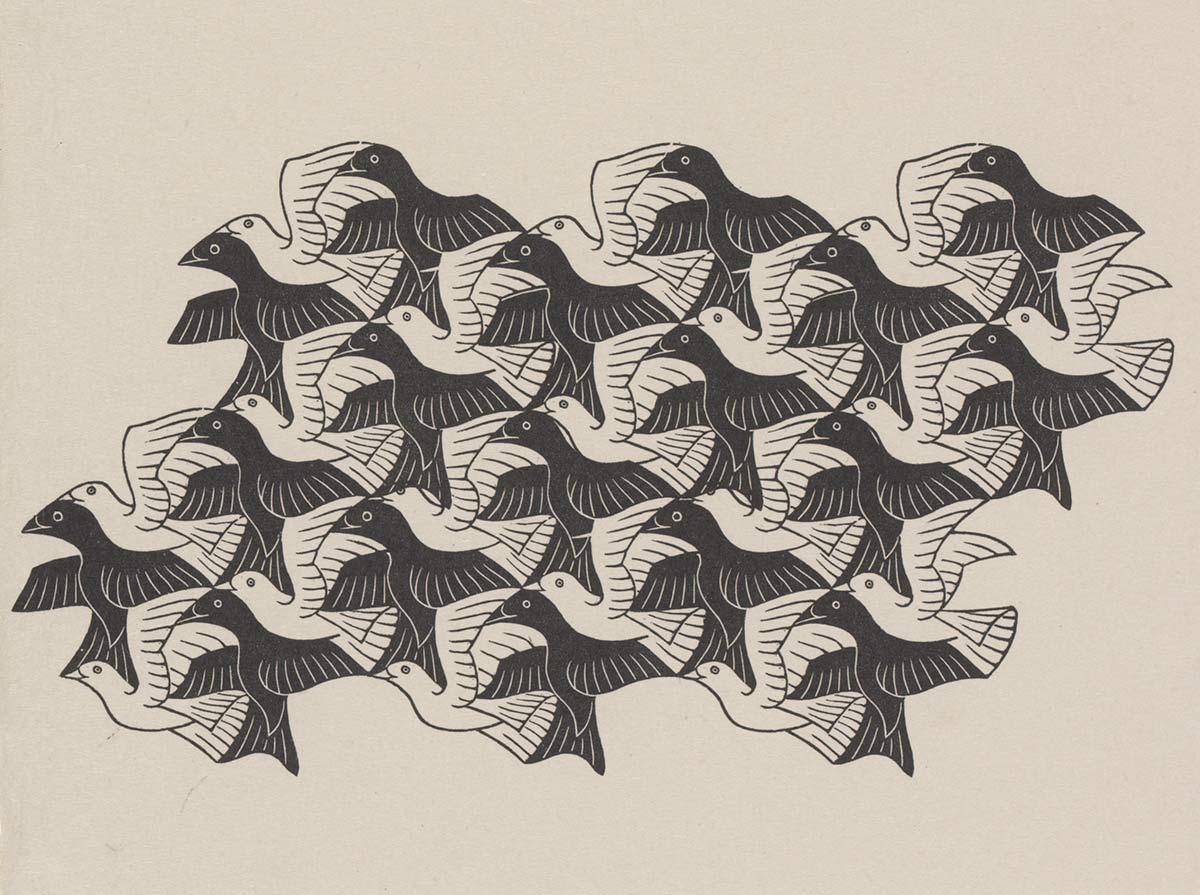

Maurits and Jetta did not just have a great time during their trip across and around the Mediterranean Sea in the spring of 1936, their journey also proved to be a great source of inspiration for the artist. To pay for it, Escher had offered to produce a print of every port town they visited and give several copies of these to the Italian shipping company Adria, to be used as they saw fit. Between August 1936 and March 1937 this led to a whole series of new prints, including some that we discussed previously: Leaning Tower of Pisa, Catania and Porthole.
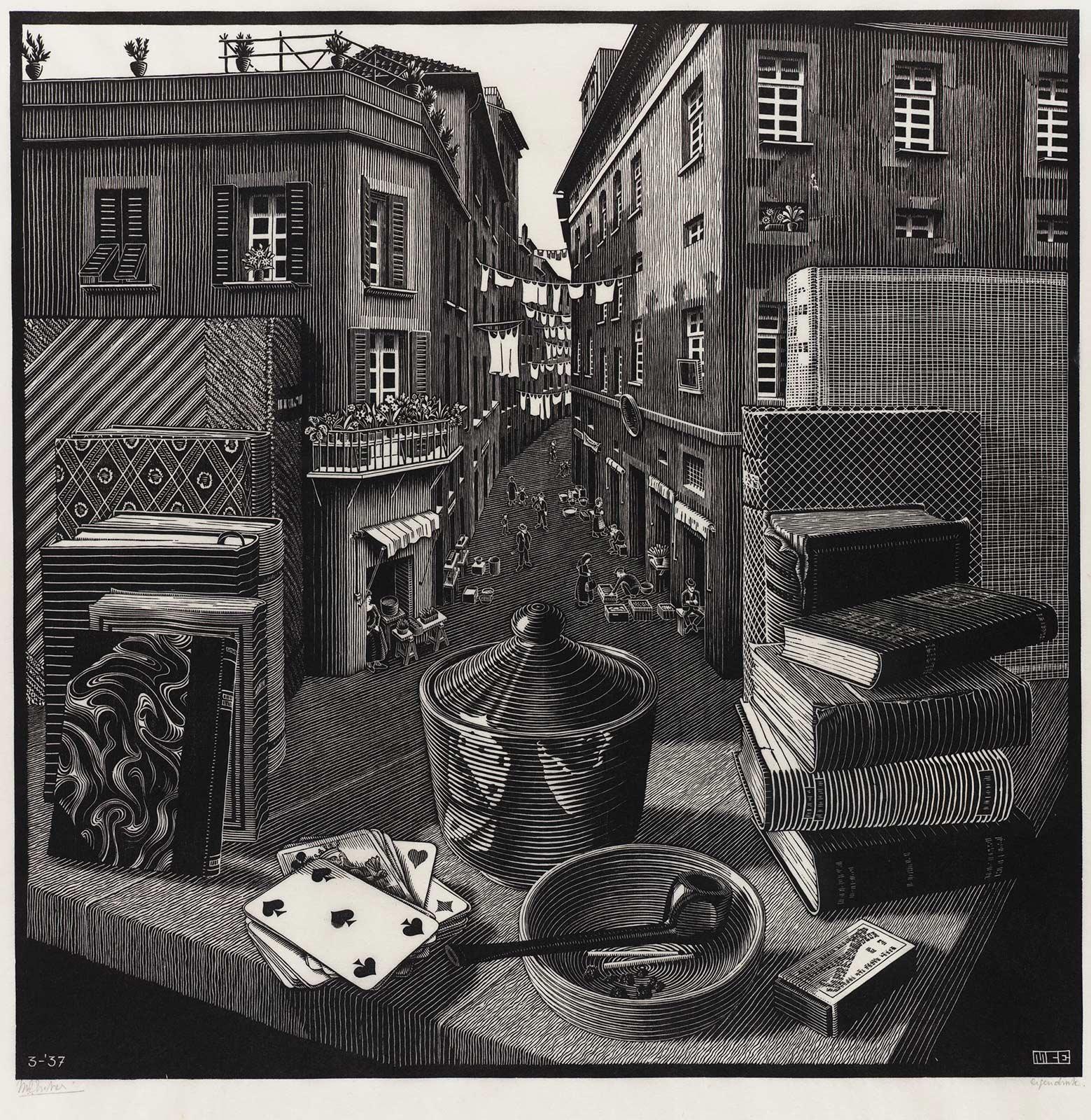
Still Life and Street is based on this trip too. It started with a drawing of a street in the coastal town of Savona, which he did on 10 June. He refers to it in his travel journal from 1936:
'At 2 o'clock in the afternoon we arrived in Savona and I found a nice old street, between high houses, which I drew from the first floor of a shop.'
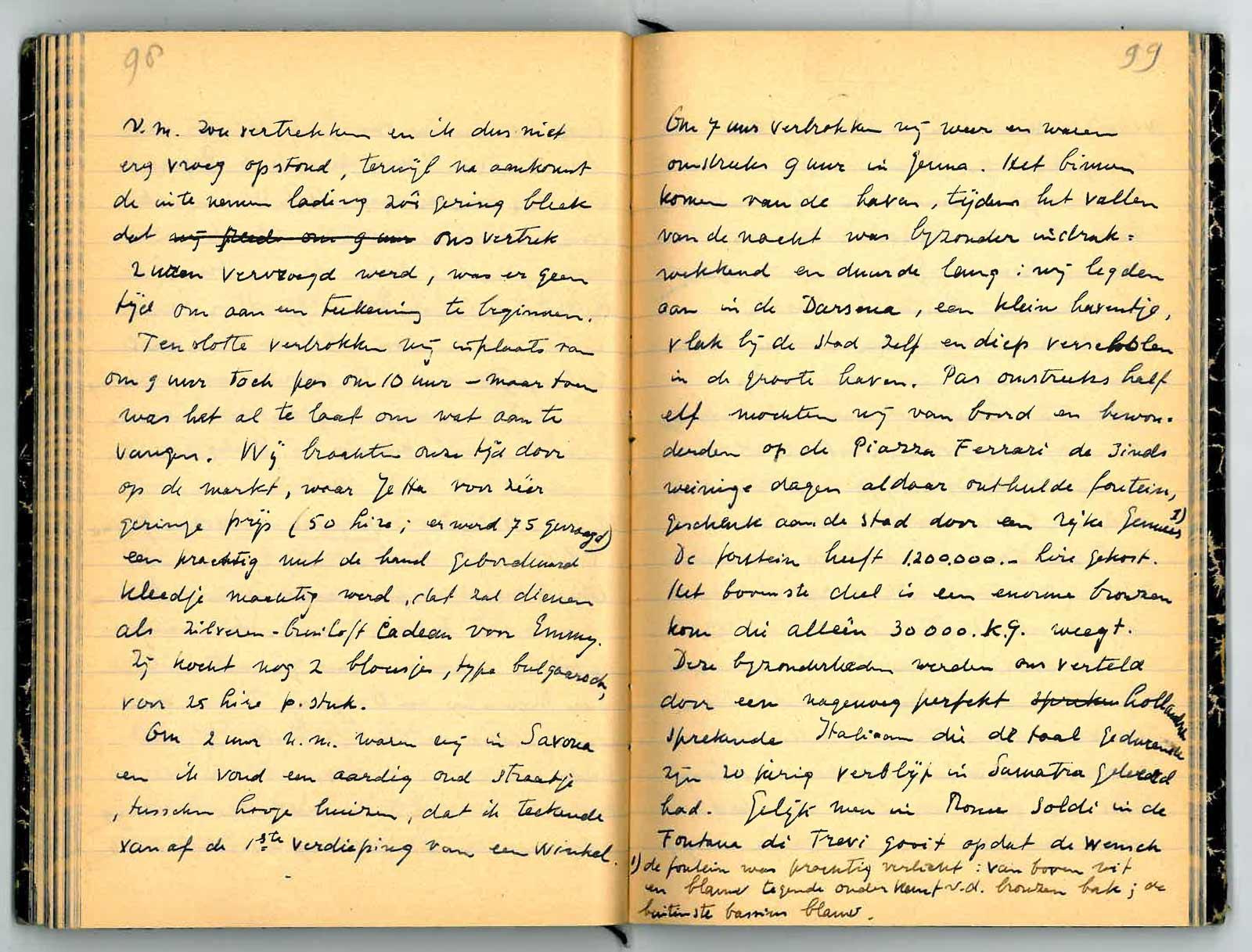
Whereas other works from this period are quite realistic, this woodcut (together with Still Life with Mirror) started Escher’s journey towards optical illusion. He was used to integrating ‘screens’ in his landscapes and cityscapes, by building the composition out of elements that are stacked behind each other within the visual field. Yet in Still Life and Street he uses the technique to generate a shock effect in the viewer.
The table filled with objects in the foreground merges instantly with the street in the background. The books appear to be leaning against the walls, making them simultaneously seem to fit in your hand and yet be several metres tall. What is more, Escher smooths the transition from nearby to far away without a middle ground by giving the table surface and the street the same diagonal structure. We neither see nor feel the transition. Escher starts with an act that is familiar to everyone—you look from the book or newspaper you are reading and you glance into the distance. You let the image sink in and suddenly you realise that what you are seeing is impossible! By making the image as realistic as possible, Escher manages to trick his audience.
Still Life and Street is an illustration of Escher’s growing desire for the impossible.* This desire would never leave him and would lead to a series of masterpieces that astound the world to this day.
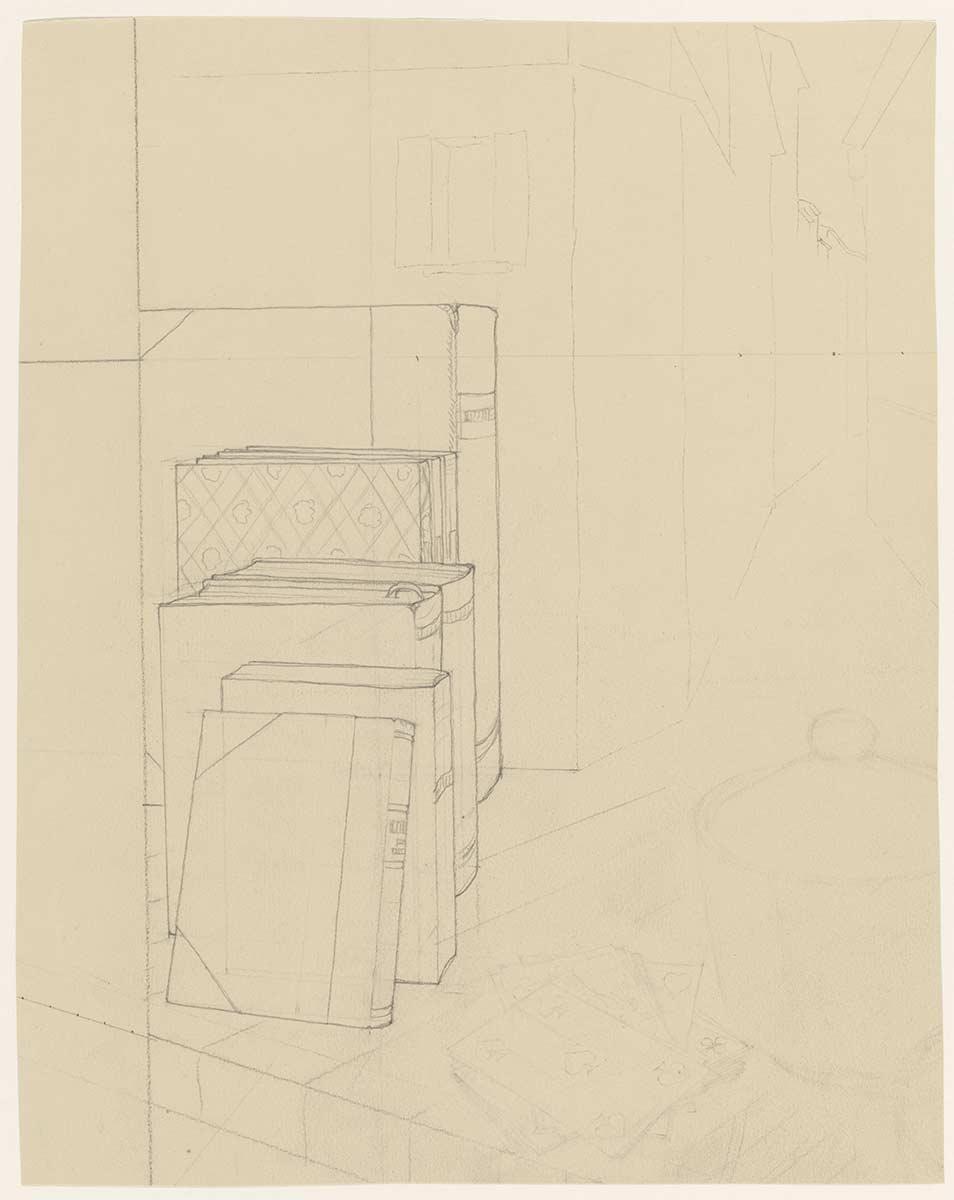
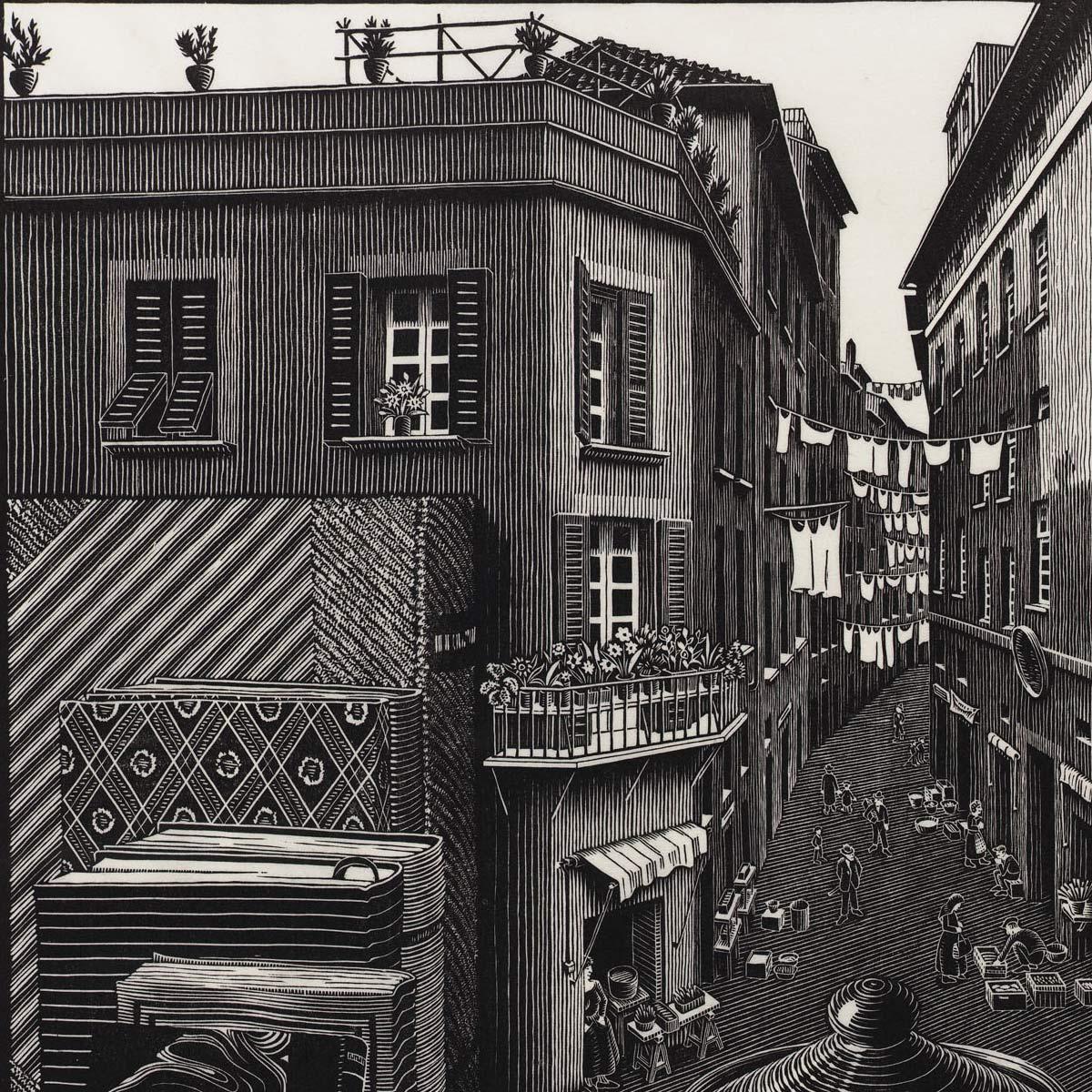
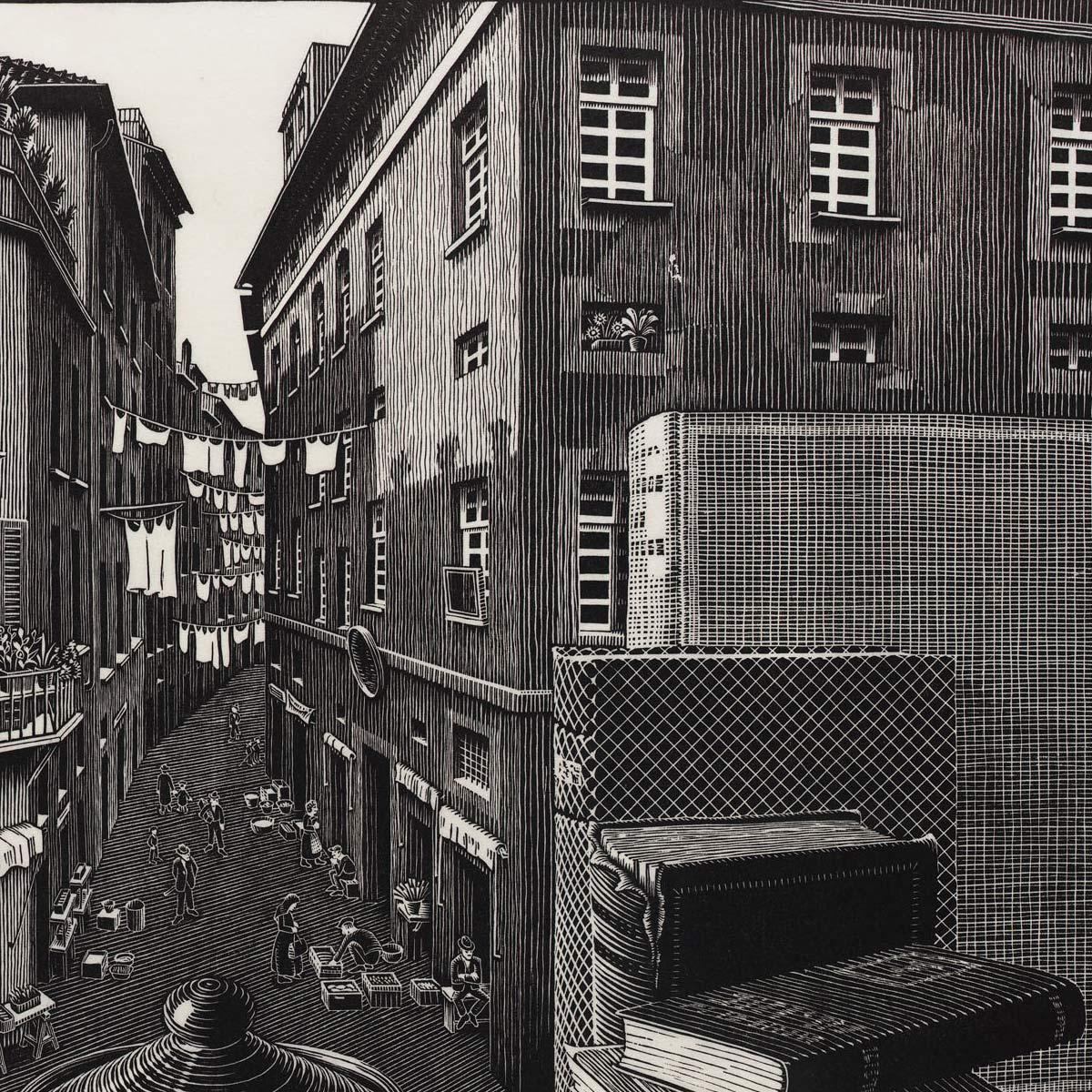
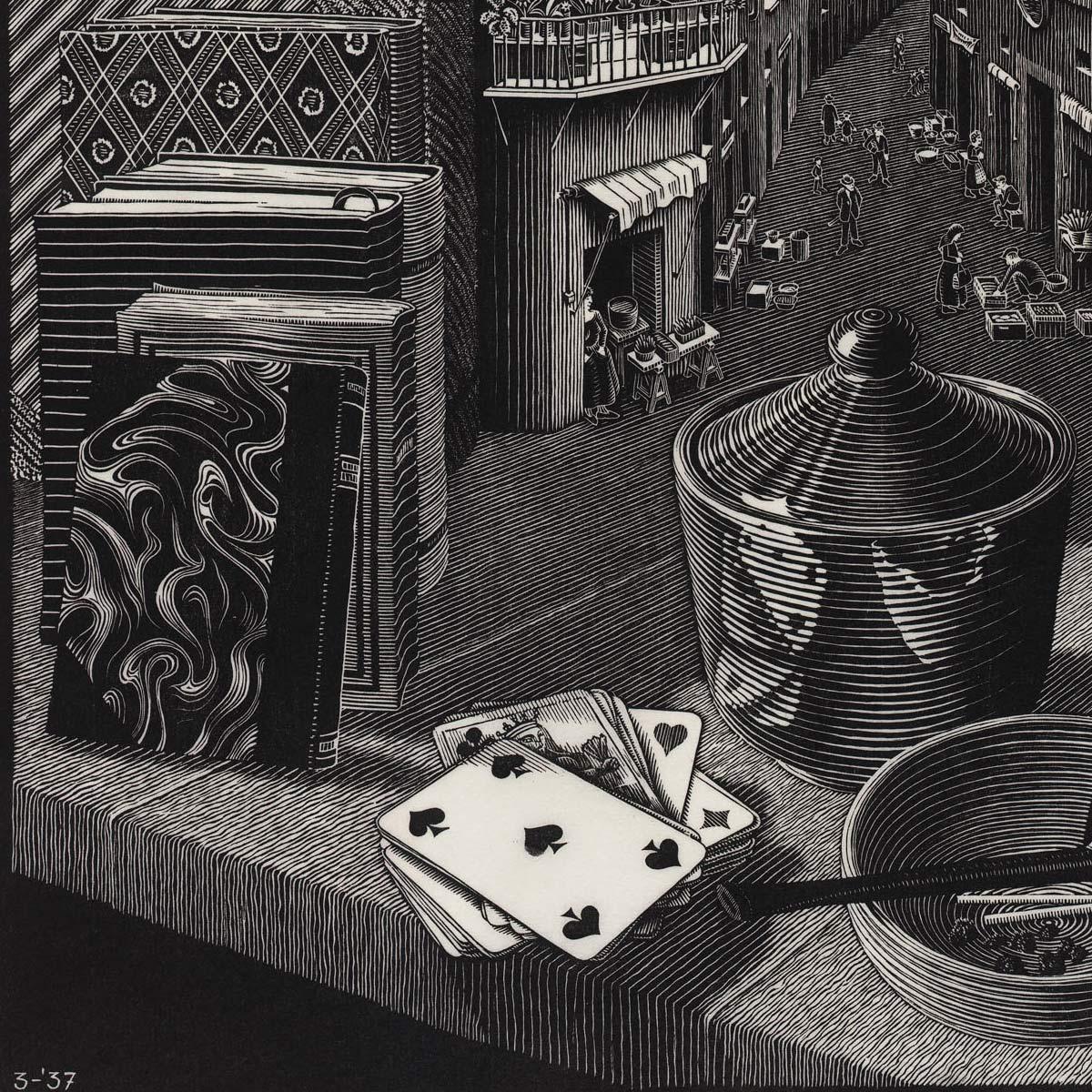
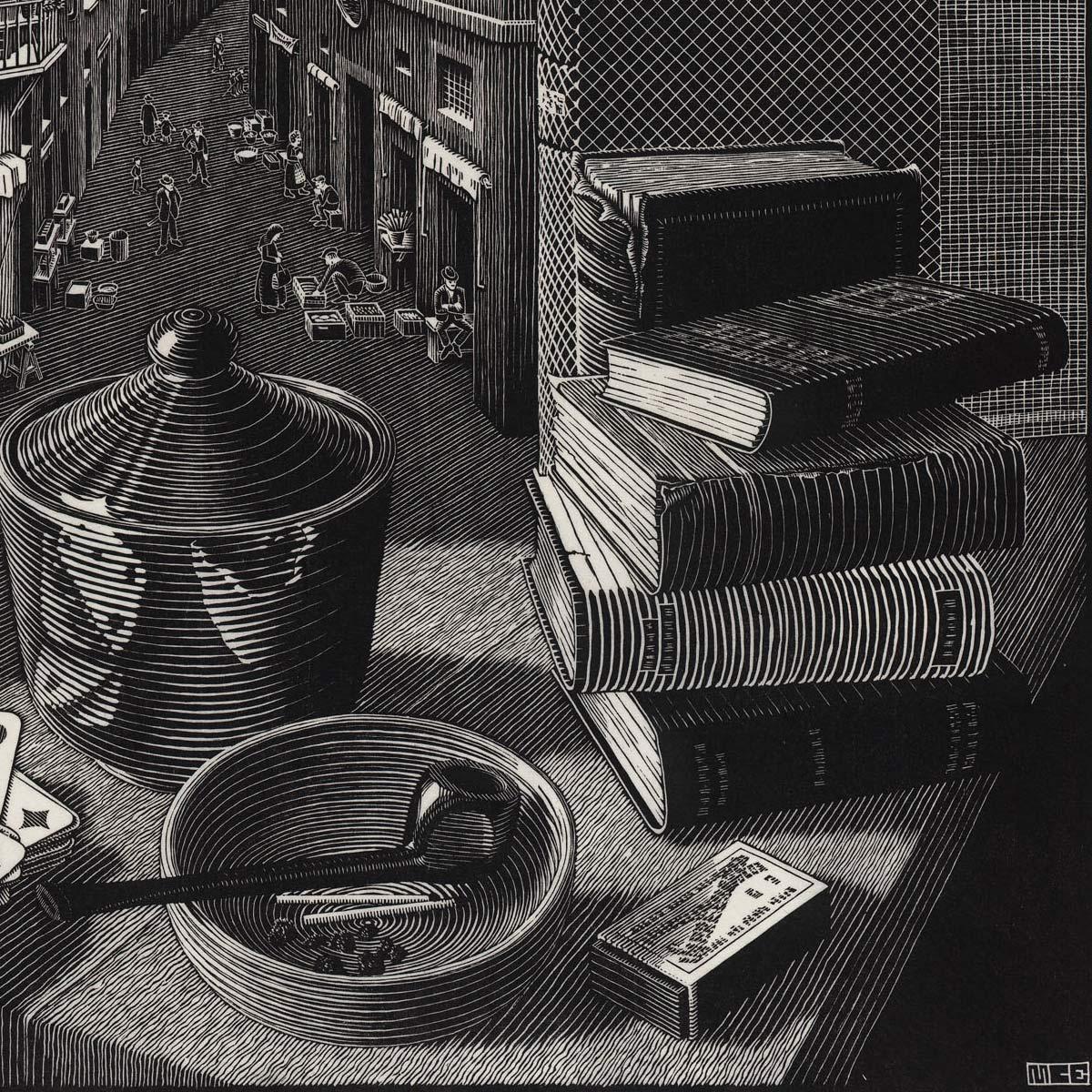
Source
[*] Wim Hazeu, M.C. Escher, Een biografie, Meulenhoff, 1998, page 200
More Escher today

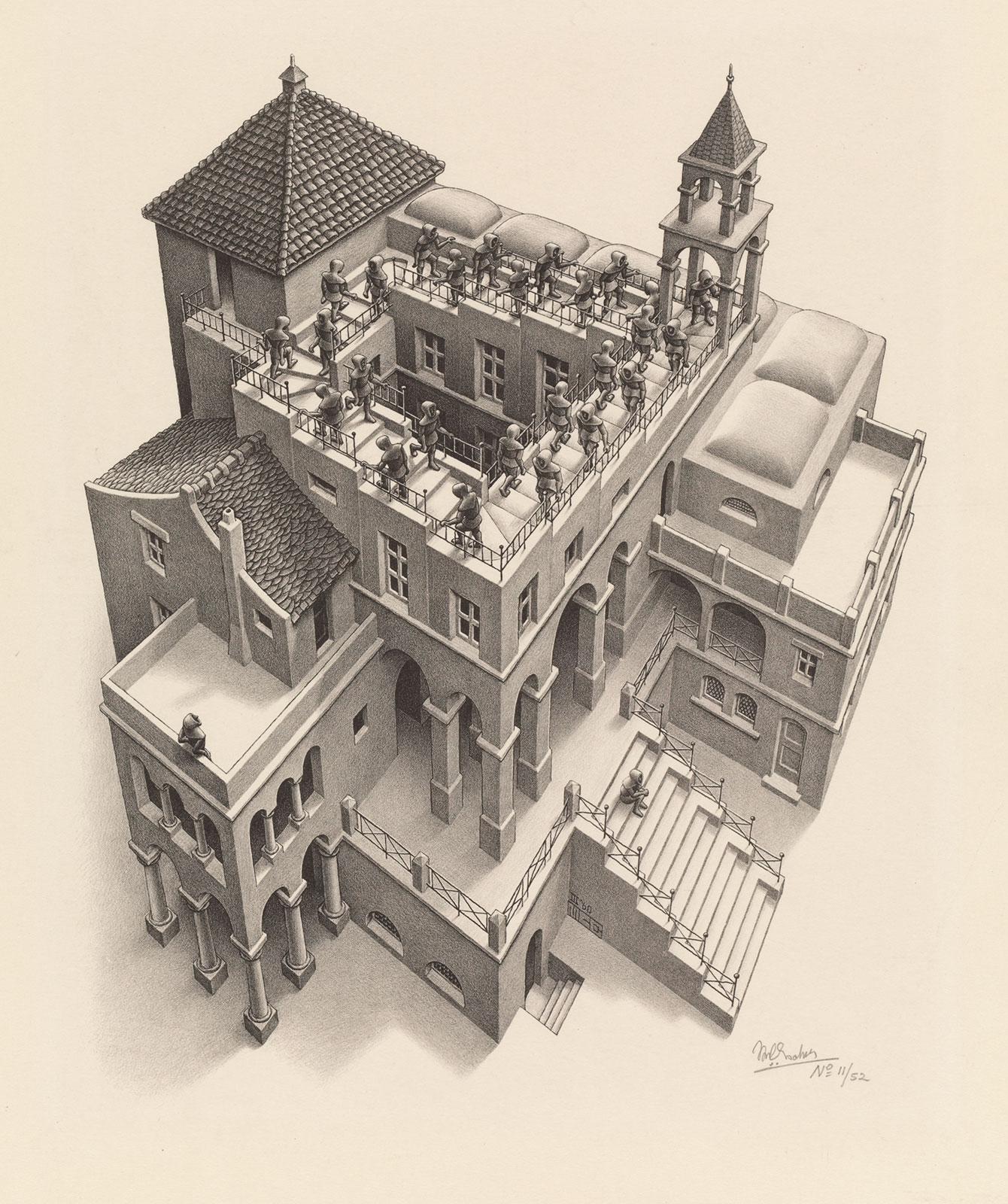
Ascending and Descending
